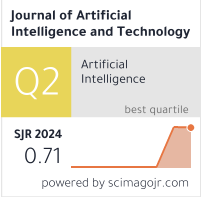Four-Way Turiyam Set-Based Human Quantum Cognition Analysis
DOI:
https://doi.org/10.37965/jait.2022.0123Keywords:
fourth dimensions, knowledge representation, non-Euclidean, Quaternion, turiyam set, unknownAbstract
Recently, the Turiyam set was introduced for characterization of data sets beyond true, false, and uncertain regions based on human cognition. This set is able to represent the unknown, undefined, or conduit metaphor of human quantum cognition precisely. One of the suitable examples is USA–Russia conflicts or Cold war is beyond the characterization of win, draw, or loss. It is totally based on the conduit metaphor of USA and Russia. In this case, a set of countries that may support Russia (Sr) can be characterized as true regions. A set of countries that does not support Russia (i.e., supporting the USA) can be characterized as false regions (Su). There is also a set of countries that supports both Russia–USA based on the given situation. These types of countries and their vote are uncertain. The fourth case is some countries like India, China, and UAE that choose nothing to fulfill their conduit metaphor. It is called Turiyam or four-dimension cognition. The characterization of this type of four-dimension Turiyam cognition and its representation is one of the crucial tasks for data science researchers. It is indeed a requirement to understand the human quantum cognition and its conduit metaphor. To tackle this issue, the current paper will try to introduce a method for characterization of this undefined, unknown, or Turiyam cognition via a defined interval set. The objective is to provide a way to explore them in known graph (t), not known graph (f), partial graph (i), or unknown graph (l) with an example.
Metrics
Published
How to Cite
Issue
Section
License
Copyright (c) 2022 Authors

This work is licensed under a Creative Commons Attribution 4.0 International License.





